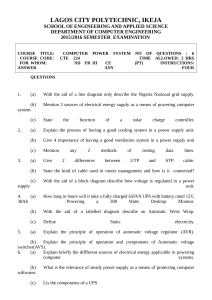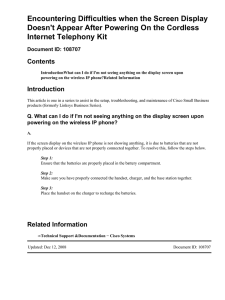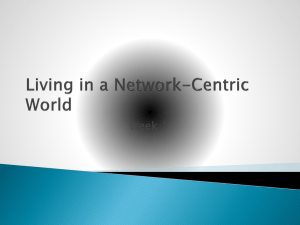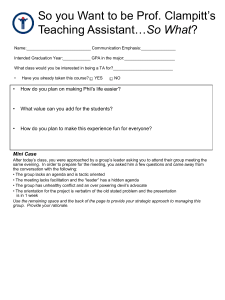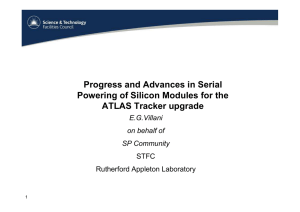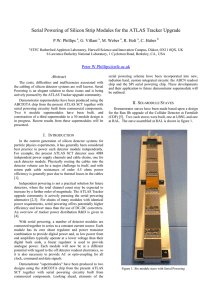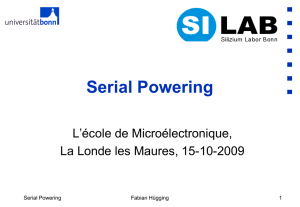Energy Efficient Networking Jennifer Rexford
advertisement
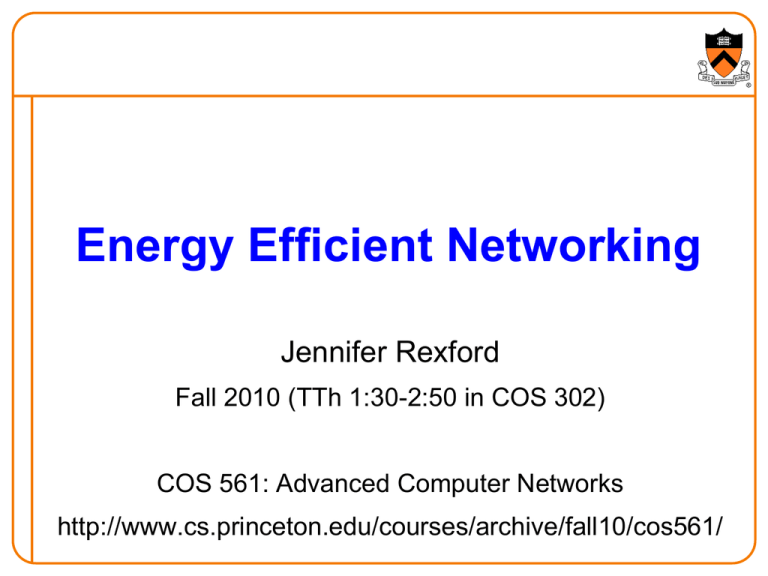
Energy Efficient Networking Jennifer Rexford Fall 2010 (TTh 1:30-2:50 in COS 302) COS 561: Advanced Computer Networks http://www.cs.princeton.edu/courses/archive/fall10/cos561/ IT Energy Consumption • IT consumes a lot of energy – Approximately 2.5% of worldwide energy use – As much as the airline industry, and growing – Expected to grow by 30% by 2014 • Data centers – Electricity costs of $4.5B in the U.S. in 2006 – More $ on power and cooling than on hardware • Networking – One third of the total IT energy use – Around 10-20% of data-center energy use – Largest energy consumer is the access equipment 2 Ways to Save Energy • Energy proportionality – Energy use should be proportional with load – Yet, most equipment operates at least efficient regime – http://research.google.com/pubs/pub33387.html • Maximizing utilization – Best energy savings is the equipment you never buy – Use the available resources as effectively as possible – … rather than buying and deploying more • Selectively powering down – Shut down equipment during periods of lower demand – But, reliability concerns … and slow powering up 3 Main Sources of Energy Use data centers consumer devices networking equipment What’s a networking researcher to do? 4 Network’s Role in Energy Efficiency • Reduce energy in other sectors – E.g., video-conferencing as alternative to travel • Maximize efficiency of smart grid – Real-time measurement and coordination – Protect the smart grid from cyber attacks • Reduce energy on end hosts • Reduce energy of the network itself 5 Networks • High energy consumption – Packet-level operations – High-speed data-plane memory • Not energy proportional • Often over-provisioned – Avoid queuing delay on the links – Handle time-of-day traffic changes – Handle a diverse mix of workloads – Have enough capacity left after failures • Bad at handling churn 200-400 W Line cards draw ~ 100W – Routing convergence on powering up/down equipment 6 Research on Network Energy • Measurement of router energy consumption – Quantifying the energy of line card, switches, … – Understanding relationship to features, load, etc. • Selectively powering down capacity – Turning off links, or tuning to lower capacity E.g., variable speed Ethernet, or bundled links – Optimization problem to identify links to shut down • Reducing disruptions when powering down – Reducing capacity of a link rather than shutting down – Techniques for reducing convergence delay – Router grafting and virtual router migration 7 Research on Reducing Host Energy • In-network proxies – End hosts cannot easily go into “low power” mode – Due to “chatty” services that require periodic traffic – Could have a proxy handle these functions for the host • Virtual machine migration – Migrate a virtual machine from one server to another – Support fast transfer of virtual machine state – Allow the VM to retain its address when it moves • Better server load balancing – Distribute client requests to data centers and servers – Based on server capacity and electricity prices – Using DNS, HTTP redirection, front-end load balancer… 8
